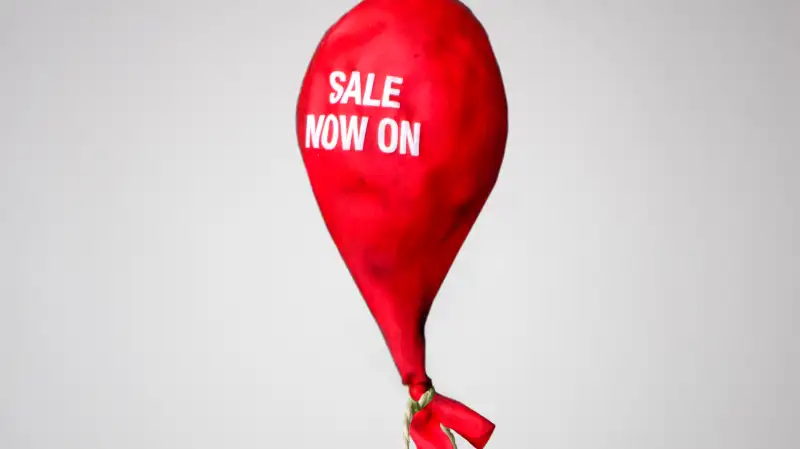Why All Those Great Holiday Deals Aren't Really Great Deals

When seemingly everything is always on sale, is anything really on sale?
That's a question that any savvy, value-oriented shopper must ask from time to time—and especially during the annual holiday shopping season frenzy, when it's routine to see entire stores discounted by 40% or 50%. When such markdowns are a dime a dozen, who is foolish enough to actually buy anything at full price?
The answer could very well be no one. Something called "price anchoring" is a widely employed tactic in the retail world. Basically, the concept involves the establishment of a high price anchor, which locks into place a perception of value. You've probably seen tens of thousands of these anchors, in the form of "list," "regular," "original," "suggested," or "compare to" amounts shown on retailer websites or price tags. Anchor prices are set intentionally high, not with the idea that consumers will actually pay the inflated prices, but so that the retailer can create the perception of a tremendous deal when the item is inevitably placed "on sale."
For example, picture a sweater listed with an original price of $100. When it's placed "on sale" for $50, that seems like quite a deal—a far, far better deal than if the original price were listed at $55 or $60. All along, however, the store selling these sweaters has been planning on getting around $50 apiece for them, and it would probably make a profit even if it sold them for $25 each—which the store surely will during after-Christmas sales.
There's nothing new about price anchoring. What is new—and pretty darn galling among consumers who expect more pricing transparency—is that in today's promotion-heavy retail world, "original" prices appear to be getting exponentially more inflated. What's more, retailers aren't even pretending that a single customer ever paid its "regular" or "original" prices for anything.
In a new New York Times column, Farhad Manjoo wades into this murky world, trying to figure out how shoppers can evaluate whether or not a deal is a deal when seemingly everything is presented as one. What he reports, among other things, is that this season in particular has seen an "explosion of less-than-stellar deals advertised on the web," in which there's really nothing special about all but a very few of the sale prices available on Black Friday and other supposedly amazing days for bargains.
While nearly all retailers engage in the practice of inflating list prices more or less with the sole purpose of making discounts seem more impressive, a Macy's spokesperson openly admitted that it came up with its original prices “based on many different factors, including the cost of the item, overhead, benefits we offer ... as well as our ability to offer the item at a lower price during sale events.” Macy's also pointed out some fine print on its website alerting shoppers of the following:
"Regular" and "Original" prices are offering prices that may not have resulted in actual sales, and some "Original" prices may not have been in effect during the past 90 days.
Holiday season sales and discounts are presented as being very special, but in fact there's often nothing special about them—because in all likelihood, the only purchases occur when these items are "on sale." If a price exists that no one ever pays, it shouldn't be referred to as a "regular" or "original" price. It could be described by another term: a fake price.
There was a lot of discussion about the topic of fake pricing back in early 2012, when J.C. Penney tried to shake up its business model, in which more than 99% of its sales were below list price, and items were routinely marked down by 50% or 60%. J.C. Penney's attempt to get rid of such extreme discounting and offer fair prices from the get-go failed miserably, at least partly because shoppers are compelled to buy more when retailers use the ruse of inflated price anchoring. And now we're left in a situation in which sales are ubiquitous, both sale and original prices are arguably more meaningless than ever, and it's never been more difficult to tell when a deal is actually a deal.
To some extent, shoppers seem to be aware of all of this. Some of the reason that Black Friday purchases were down this year is that the majority of consumers felt that Black Friday sales are meaningless because they assumed—rightly so—that there would be "more sales throughout the holidays."
